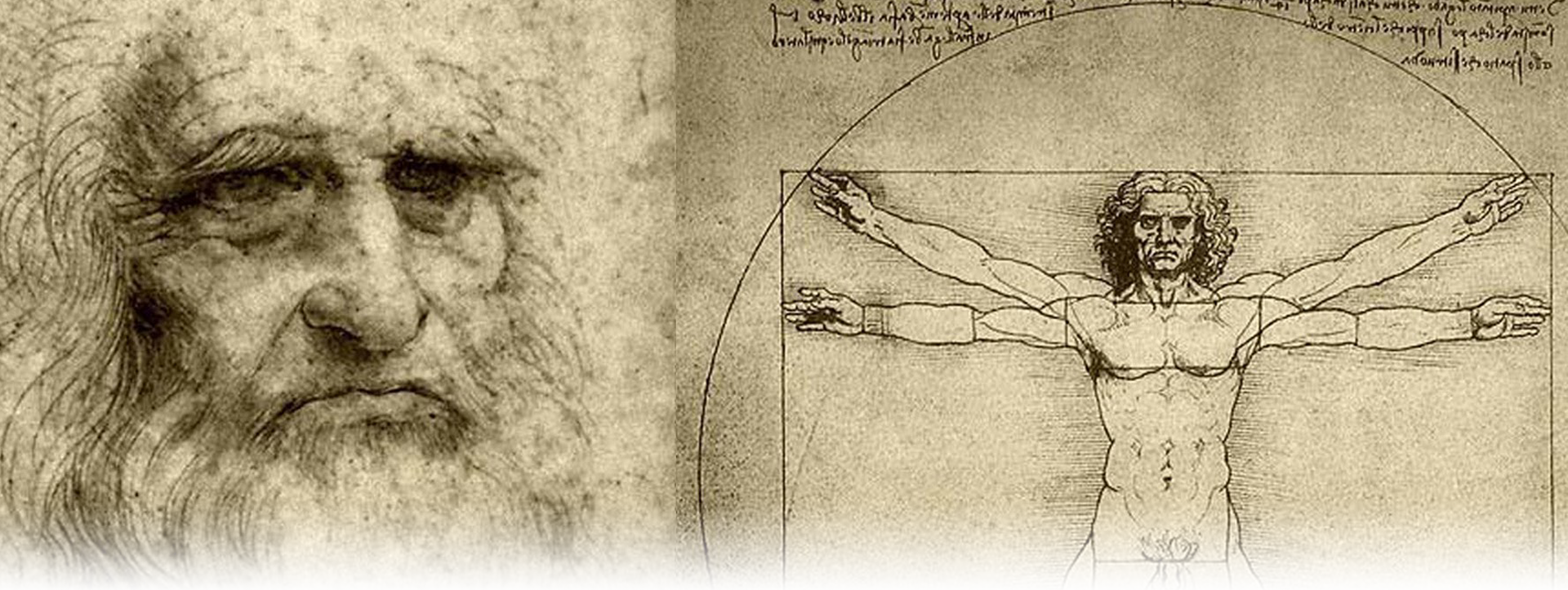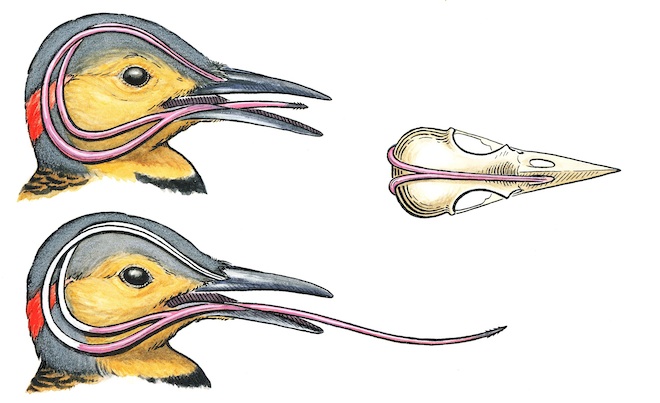
Category: Behavioral Economics, Digital, Foresight Thinking, Innovation
Jan 13
The Tongue of the Woodpecker OR The Digital Anti-Renaissance
About seven thousand pages tightly scribbled with notes and drawings of Leonardo da Vinci have survived into modern times. Experts estimate that they count for a quarter of his total work, covering all known disciplines in science and the arts. His thirst for knowledge was so big, that he repeatedly got lost into new questions that came up, so much that he finished only few of his commissions or treatises that he had planned. A true renaissance man with a tendency to procrastinate.
The Renaissance on the one hand showed a renewed interest in the teachings from the classical antique, and on the other the desire to finally let go of their knowledge and start a new age of modern science. Da Vinci was one of their most important contemporaries, because he more than everyone else devised and conducted experiments. Born out-of-wedlock he had not enjoyed an education based on Latin, the classics, and books. He was not ‘book-learned‘. The most important works were only available in Latin, which he was not taught, and the printing press had just been invented with books in local languages slowly coming available.
What he lacked here he filled more than enough with curiosity and experiments. He constructed new contraptions for his experiments to find answers to his many questions. One of the things he created was a glas heart to find out how heart valves work. A feat that was only repeated in the mid-twentieth century.
Thirst for Knowledge
For all his life he kept this unquenchable thirst for knowledge, even for many things that seem trivial to us. A list from 1490 that he created in Milano, gives a glimpse in what he wanted to learn and do:
- The measurement of Milan and its suburbs;
- Draw Milan;
- Get the master of arithmetic to show you how to square a triangle;
- Ask Giannino the bombardier about how the tower of Ferrara is walled;
- Ask Benedetto Protinari by what means they walk on ice in Flanders;
- Get a master of hydraulics to tell you how to repair a lock, canal and mill in the Lombard manner;
- Get the measurement of the sun promised me by Maestro Giovanni Francese, the Frenchman;
- …
- Observe the goose’s foot: if it were always open or always closed the creature would not be able to make any kind of movement;
- Why is the fish in the water swifter than the bird in the air when it ought to be the contrary since the water is heavier and thicker than the air?
- Describe the tongue of the woodpecker;
This last entry is a peculiarity. The tongue of the woodpecker? Why? What’s so interesting with that? It definitely was not an oversight or a flicker of the moment, as the same entry can be found years later.
In 1508 da Vinci conducted a series of anatomical studies and maintained a to-do list for this. On the one page he had a list of surgery instruments, on the other small drawings of nerves and blood vessels which he had observed dissecting the brain of a deceased centenarian.
- Have Avicenna’s book on useful inventions translated (Avicenna was a Persian polymath in the 11th century);
- List of equipment that he needed:
- spectacles with case;
- firestick;
- fork;
- curved knife;
- charcoal;
- boards;
- sheets of paper;
- white chalk;
- wax;
- forceps;
- pane of glass;
- fine-tooth bone saw;
- scalpel;
- inkhorn;
- pen-knife;
- and get hold of a skull.
- Describe the tongue of the woodpecker;
- …
And a few pages later:
- Make the motions of the woodpecker;

Tongue of the Woodpecker
In his thirst for knowledge he dissected several dozens of people over the course of several years, including animals such as horses. While the church did not approve of this, those were the first approaches to anatomy and understanding the human body. As engineer, painter, sculptor, architect, and one of the first modern scientists da Vinci was always keen to combine his disciplines. Maybe also because he didn’t see them as separate disciplines.
To model realistic and lively facial expressions and body movements in his paintings, he was on the quest of understanding muscles and their functions. The smile on the Mona Lisa, which still keeps mystifying us today, is a result of his decades long studies on the way nature works. How muscles move lips, cheeks, or the forehead was something he was working on.
The human tongue as an outlier in the category of muscles seemed especially interesting to him. It’s the only muscle that works not by contracting but by stretching. And because he was a polymath, he wanted to understand the tongue of the woodpecker. Besides, it was much easier to get hold of an animal corpse than a human corpse.
What was natural for him – the desire to understand how things work and actively working on getting answers and designing and executing experiments – requires a lot of energy. It’s easier to accept things as they are and not question them. Not so Leonardo. His entire life was one of searching to understand the world and perfect his own work with those i sights.
We can see how much it resulted in improving his art in two portraits. The one of Ginevra de’ Benci was done when he was a young artist, the Mona Lisa known as the portrait of Lisa del Giocondo was done thirty years later..
Not only did he develop a much finer painting technique, also perspective, colors, shades, and finally the finesse in the facial features show with the Mona Lisa an unprecedented mastery in portraits painting.
What Leonardo da Vinci displayed is what we call today a Renaissance Man. The polymath who’s keeping for an entire life an intense curiosity of even the most trivial phenomena.
Digital Anti-Renaissance
And that’s in contrast to the digital Anti-Renaissance of modern man. For quite some time I have been asking audiences at conferences or delegates from Europe the following types of questions:
- What iPhone/Smartphone do you have?
- Do you use a voice assistant?
- Have you used a ride sharing provider such as Uber?
To make it clear: the people that I am asking those questions are not your John Does. They are innovation manager, product development leads, IT consultants, digital evangelists, analysts, journalists covering digital trends and topics.
Here are the results of the last three conferences, where I asked a) who has an iPhone X or similar (with facial recognition) and b) a voice assistant (Alexa, Google Home):
- Development Leads automotive industry: a) 2, b) 5 of 300 participants
- IT consultants: a) 2, b) 0 of 35 participants
- Development Leads automotive industry: a) 2, b) 0 of 200 participants
The excuses that the attendees told me, were pretty familiar: The Phone is too expensive. The voice assistance keep listening to my conversation. And who really needs that stuff?
At the same time all of them own or use a car, where price plays almost no role, and which kill hundreds of thousands of people around the world every year.
Alexa to my knowledge has not yet killed a single person and costs 50 dollars. But the European – presumably – innovation leaders are shitting their pants because an electronic device listens or costs as much as or less than a conference ticket.
Those arguments are just excuses and display an appalling lack of curiosity and will to understand the world. Here I want to make clear that I am neither talking about the population average, nor that I say that you must own an iPhone X or an Alexa. But they are a symptom of the underlying disease. The very same people that are tasked with bringing their companies and countries into the future are alarmingly uninterested. New trends are neither recognized and there is no desire to deal with them, nor are they initiated or developed by them.
I talked about that already in the past blog.
Conclusion
You can’t learn Ping Pong by reading a book about it. You won’t become a driver and a safe one too, by watching videos on YouTube. You don’t learn ‘digital’ by just visiting conferences about digital transformation. You have to take the Ping Pong racket in your own hands and play, you have to sit behind a steering wheel and drive the car, and you need to use an iPhone X or voice assistant. And all that on a regular base and for a longer period.
If Europe is not shaking off the digital Ante-Renaissance and displays interest in the digital equivalent to the tongue of the woodpecker, then neither the companies nor Europe will be moving into the future and be part of the creation process. We have to experiment, and not just acquire conference and book knowledge.
Actually, it doesn’t cost anything to change some of our habits to get there. Instead of going day in day out with the same team members for lunch, make it a habit to schedule lunch dates twice a week with colleagues from other departments. And another one or two times a week meet for lunch with someone from outside your company.
Those of you who can spend a few dollars, plan for a small budget to acquire interesting technologies and tools.
- Alexa = 50 Euro,
- Smartplug = 20 Euro,
- new iPhone = company phone,
- Shapr-App = free
- visit Meetups in the neighborhood
- book a caricature drawing course
- attend a conference that has nothing to do with your field
- ….
Not only will you increase the probability to understand the future better, but your life will become way more interesting.
This article is also available in German.



Recent Comments